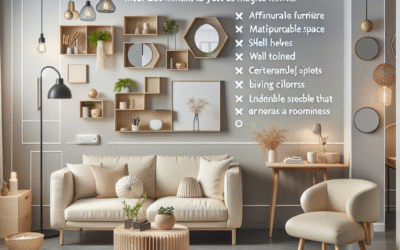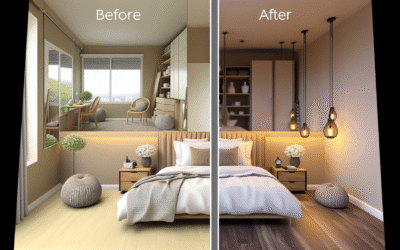
From Flat to Fabulous: Unlocking Your Room’s Potential with Layered Rugs
Ever walked into a room and felt it lacked a certain something? Perhaps it felt… flat? The secret to transforming a lifeless space into a vibrant, cozy, and utterly fabulous sanctuary often lies beneath your feet. Welcome to the art of **layered rugs**, a design technique that adds depth, texture, and personality like no other. This comprehensive guide will *unlock your room’s potential* by revealing every trick, tip, and triumph of rug layering.
You’re about to embark on a journey that will demystify rug layering, turning you into a confident design maestro. We’ll cover everything from the basic ‘why’ to advanced styling ‘how-tos,’ ensuring your spaces radiate warmth, style, and undeniable character. Get ready to redefine your interior.
Why Layer Rugs? Beyond Just Aesthetics
It’s more than just a pretty picture; layering rugs solves real design dilemmas.
Defining Zones in Open-Concept Living
Adding Warmth and Coziness
Injecting Personality and Texture
Protecting Floors with Style
Cost-Effective Design Solutions
- *Short impactful sentence.*
- *Detailed explanatory sentence.*
The Foundation First: Selecting Your Bottom Rug
The unsung hero of your layered rug ensemble.
Size Matters: Anchoring Your Space Correctly
Material Choices: Durability Meets Comfort
Color and Pattern: Setting the Stage
Understanding Underlayment: The True Backing of Your Design
The Star of the Show: Selecting Your Top Rug
Where your personality truly shines.
Contrasting or Complementing: The Art of Visual Balance
Texture Play: High Pile vs. Low Pile Dynamics
Shape Shifters: Beyond the Rectangle
Pattern Mixing Mastery: A Bold Statement
Mastering the Technique: How to Layer Rugs Like a Pro
Practical steps for flawless execution.
Placement Perfection: Where to Position Each Rug
The Overlap Rule: Finding the Sweet Spot
Securing Your Layers: Preventing Slips and Bunching
Different Room, Different Rules: Entryways, Living Rooms, Bedrooms
- Step one.
- Step two.
- Step three.
Style Spotlight: Layered Rug Inspirations for Every Aesthetic
From Boho to Modern Farmhouse, find your perfect match.
Bohemian Rhapsody: Textural Harmony
Modern Minimalism with a Twist
Farmhouse Fresh: Rustic Layers
Glamour & Elegance: Sophisticated Stacks
Kid-Friendly & Durable Layers
Common Pitfalls to Avoid When Layering Rugs
Even pros occasionally stumble; learn from shared missteps.
Ignoring Scale and Proportion
Too Much of a Good Thing: Over-Layering
Forgetting About Functionality
The Single-Texture Trap
Care and Maintenance: Keeping Your Layers Looking Fabulous
Ensuring longevity and freshness for your beautifully layered rugs.
Routine Cleaning: Vacuuming and Spot Treatments
Deep Cleaning Strategies for Each Layer
Dealing with Shifting and Creasing
When to Rotate or Refresh Your Layers
Frequently Asked Questions About Layered Rugs
Can you layer any two rugs together?
While you *can* technically layer any two rugs, achieving a cohesive and aesthetically pleasing look requires thoughtful consideration. It’s not just about throwing two rugs down. The best results come from deliberate choices regarding size, texture, pattern, and material. Often, a larger, neutral foundational rug paired with a smaller, more decorative top rug works wonders, creating visual interest without overwhelming the space. Think about how the colors and patterns will interact, aiming for either complementary tones or deliberate, high-contrast statements rather than clashing elements.
What size rug should be on top for a layered look?
The top rug should generally be significantly smaller than the bottom rug, typically about two-thirds to three-quarters the size. This allows the foundational rug to create a ‘border’ or ‘frame’ around the smaller accent rug, grounding the layered effect. For instance, if your base rug is an 8×10′, a 5×7′ or 4×6′ rug often works well on top. The goal is to ensure both rugs are clearly visible and that the smaller rug defines a specific area within the larger rug, contributing to both visual layering and zone definition.
Is layering rugs a good idea for high-traffic areas?
Layering rugs can indeed be suitable for high-traffic areas, provided you choose durable materials and employ proper securing techniques. For the bottom rug, opt for sturdy, low-pile options like jute, sisal, or a flat-weave wool that can withstand consistent footfall. The top rug can then introduce softness or pattern, perhaps a washable cotton or a more resilient synthetic blend. Crucially, use a high-quality rug pad between layers and beneath the entire ensemble to prevent slipping, bunching, and premature wear, ensuring safety and longevity in busy spaces.
How do I prevent layered rugs from slipping or bunching?
Preventing slippage is key for safety and aesthetics. Always place a non-slip rug pad underneath your foundational rug, especially if it’s on a hard surface. For securing the top rug to the bottom rug, consider a few methods: 1) Double-sided rug tape designed for fabric can be effective, adhering the top rug’s edges to the bottom one. 2) Anti-slip mesh or a thin rug pad placed directly between the two rugs can add extra grip. 3) For heavier rugs, simply overlapping them sufficiently and ensuring furniture legs rest on both layers can help stabilize the arrangement. Regular adjustments may still be needed, but these measures significantly reduce movement.
What are the best rug materials to layer together?
The best rug materials for layering often involve a contrast in texture and pile. For the bottom rug, durable, low-pile options like jute, sisal, or a flat-weave cotton or wool provide a stable base. These natural fibers offer organic texture and can withstand more wear. For the top rug, you can introduce softer, higher-pile materials such as a plush sheepskin, a shaggy wool, or a rich chenille, adding luxury and comfort. Alternatively, a printed cotton or a vintage Oushak can provide visual interest. The key is to blend different tactile experiences, creating a rich, layered aesthetic that’s also practical.
Categories
- Accent Walls & Ceilings (61)
- Art Curation & Gallery (62)
- Bedding Style Trends (68)
- Bedroom Makeover (81)
- Bohemian & Eclectic Styles (58)
- DIY & Budget-Friendly Decor (64)
- Eco-Friendly Design (62)
- Furniture Care (71)
- Home Decor & Design Ideas (162)
- Home Wellness Spaces (59)
- Integrated Outdoor Living (67)
- Japandi Style (61)
- Kids and Nursery Decor (59)
- Living Room Decor (79)
- Mix & Match Techniques (73)
- Modern & Contemporary Design (66)
- Rug Sizing & Placement (73)
- Scandinavian Design Inspiration (20)
- Seasonal Home Decor (79)
- Small Space Solutions (73)
- Wall Art & Painting Tips (77)
Recent Comments
Archives
Product Gallery
-
Large Area Green Rugs for Bedroom Nordic Living Room Decoration Shaped Carpet Irregular Plush Lounge Rug Home Thick Washable Mat
Rated 5.00 out of 5$54.94 – $346.41Price range: $54.94 through $346.41 -
Nordic Style Rugs for Bedroom Morandi Living Room Decoration Carpet Large Area Geometry Lounge Rug Home Cloakroom Non-slip Mat
Rated 5.00 out of 5$39.46 – $597.66Price range: $39.46 through $597.66 -
Irregular Shapes Living Room Decoration Carpet Modern Style Rugs for Bedroom Home Thicken Plush Rug Fluffy Soft Lounge Floor Mat
Rated 4.83 out of 5$55.84 – $347.37Price range: $55.84 through $347.37














